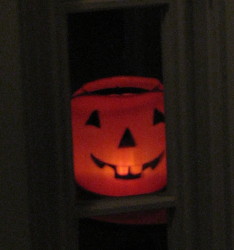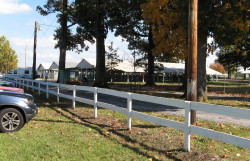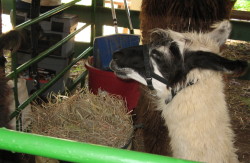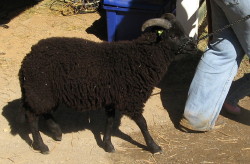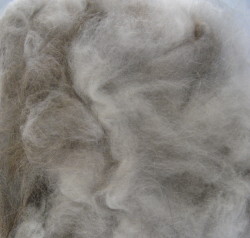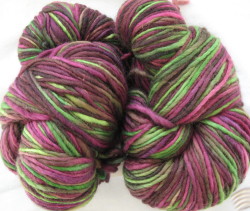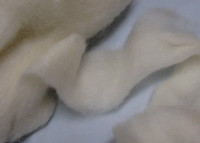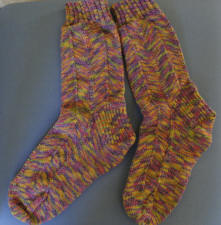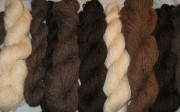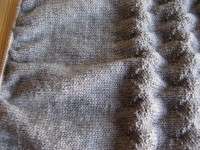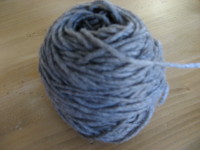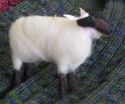I must say, I'm loving the little pirates and pirate wenches this year. Yo ho, yo ho, a pirate's life for me. I could really use a tricorn pirate hat. I'm sure with the right accessories....
Well, anyway. Maybe it's time for an update on my current work in progress, the long-sleeved pullover using Naturally NZ Harmony yarn. You know, I do believe this sweater needs a name. Just to myself, I've taken to calling it "Pine Bark," because the color and the texture near the bottom hem put me in mind of that. It pleases me, too, that it makes me think of Pine Bark Stew, a dish that I once encountered on a visit to Savannah, Georgia, at a restaurant in the old row of nineteenth-century warehouses along the riverfront. They serve it with a little sherry on the side to pour over it and mix in. Evidently, it's a fairly famous traditional dish in that part of the South. I think I still have a brochure squirreled away somewhere with their particular version of the recipe.
So, I've finished knitting the back of Pine Bark. Since I'm designing it myself, and making some of the decisions as I go along, that meant I had to at least figure out how wide I wanted the back neckline to be, and what kind of edging I would use for the neckband. (Why? to figure out where to start the slanting for the shoulder line.) On a sweater where I don't want to use a standard ribbing, I find designing neckbands a bit of a challenge. If it's not a high neckline, like a mock turtleneck or a funnel or a crew, I want the neckband to curve and pull in a little so it will lie confidingly against the throat or collarbone instead of standing away. If it's a stitch pattern that doesn't give me much scope for decreasing stitches, the best I've come up with is to use smaller and smaller needles as I get toward the edge. But I digress. There was much swatching and measuring of necklines on sweaters and tops in my closet, until I came up with an arrangement I hope will work.
Well it is Halloween. I guess it's her day. Maybe it's Spinning Spider Jenny.
Well, anyway, I've moved on to start the front of Pine Bark. I guess before long the depth and shape of the neckline will become critical. I have a vague idea of what I want to do, but we'll cross that bridge when we come to it. I'm sure I'll sort something out when I really have to!
I've reached one important milestone: I'm now certain I will have enough yarn. Based on the numbers in Ann Budd's indispensable Yarn Requirements card, that wasn't entirely a sure thing for the gauge and the size I wanted it to be. But I got through the back with three skeins of the twelve, and it's all downhill from here. I'm intending for the sleeves to be fairly trim, so they won't take as much yarn as the front or back. It's a relief to stop wondering whether I'll run out of yarn; I didn't want to be mail ordering to New Zealand looking for matching dye lots. I'll probably end up having enough left over to make a scarf or hat and then feel like I could have thrown in a few cables after all!
 As you can see, I've started the front but haven't yet gotten all that far. Just the bottom edging and the first few rows - Oh, for heaven's sake. A pumpkin's come to roost on my knitting hand.
As you can see, I've started the front but haven't yet gotten all that far. Just the bottom edging and the first few rows - Oh, for heaven's sake. A pumpkin's come to roost on my knitting hand.Go away! Shoo!
Well, I'll just have to get a jar and see if I can't catch him and take him outside.
Happy Halloween to all! Aarrrr!!
